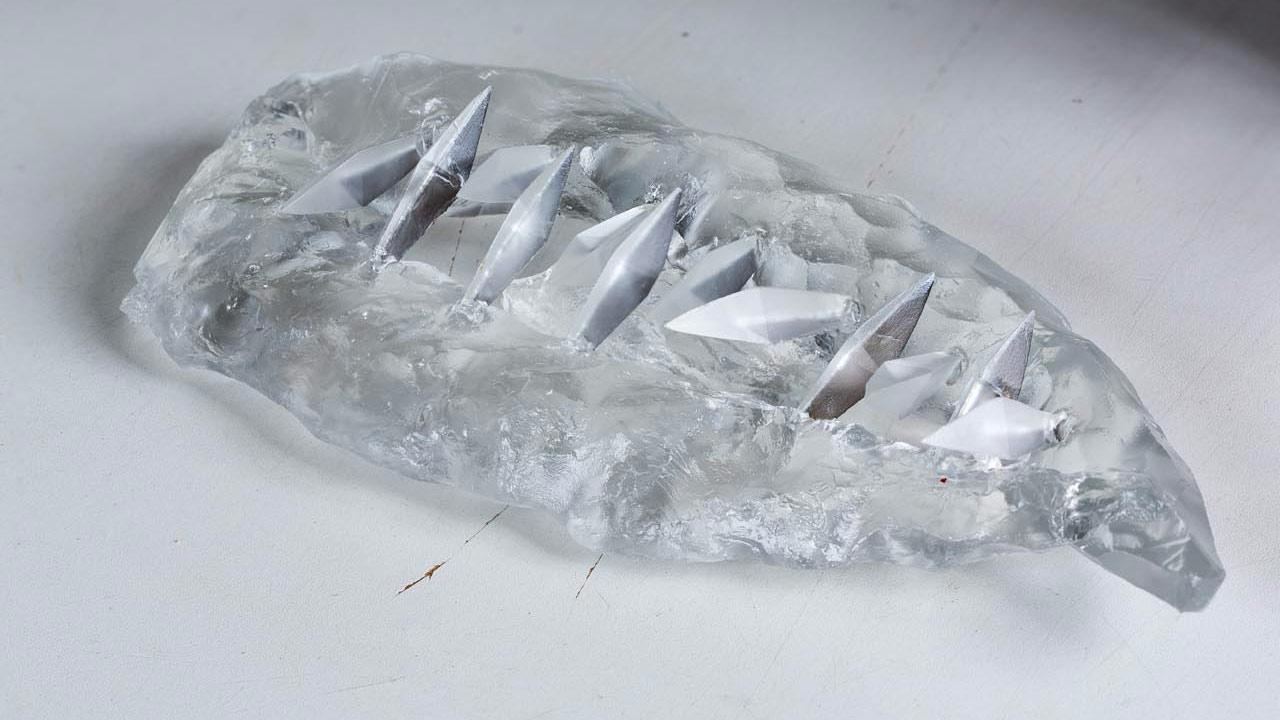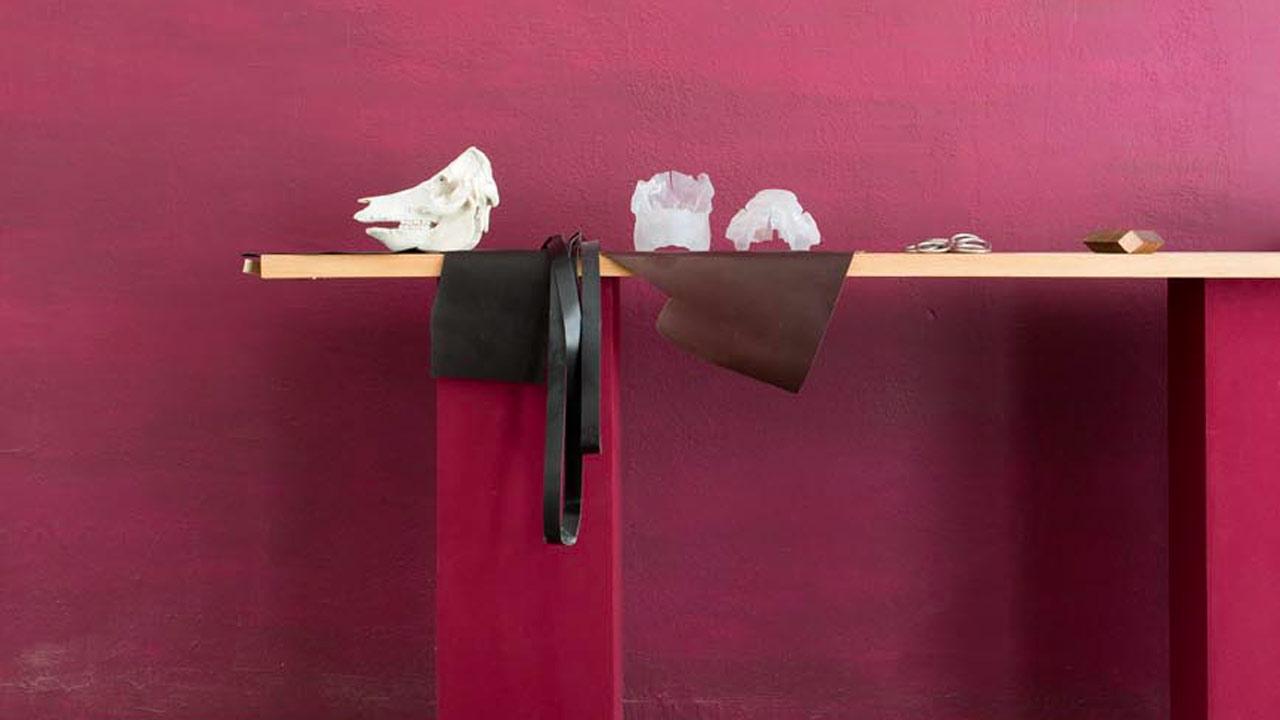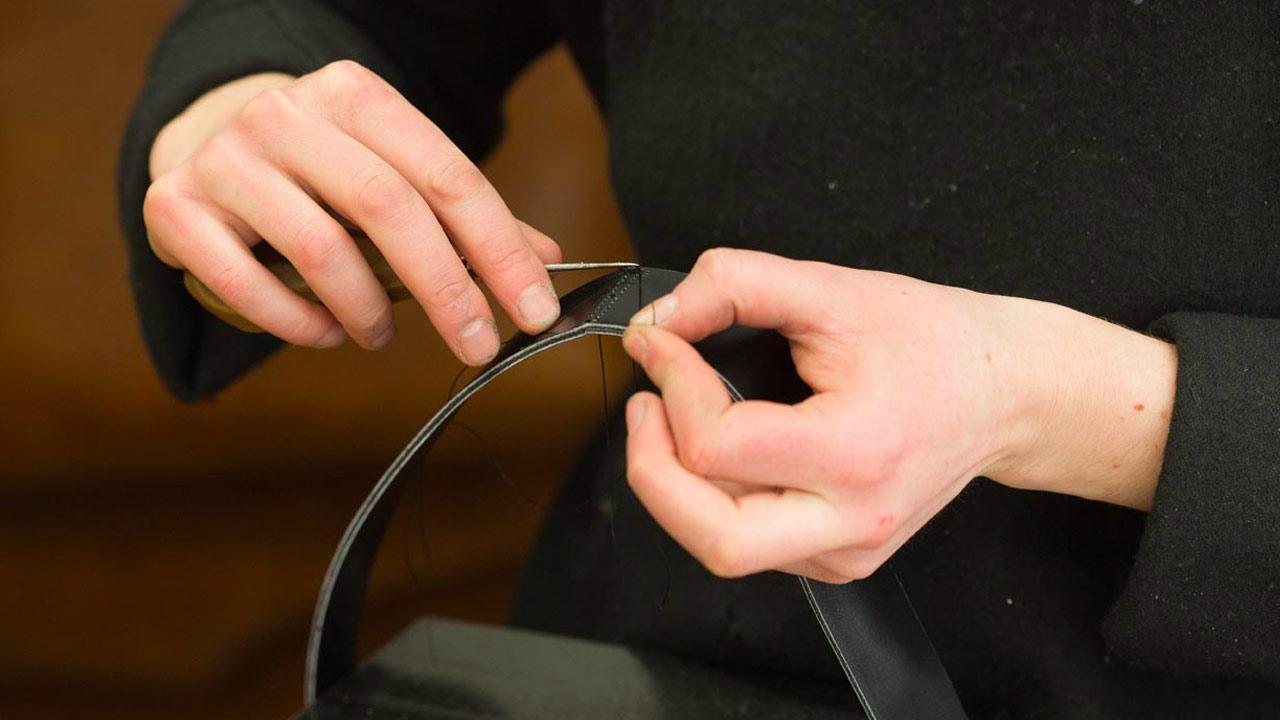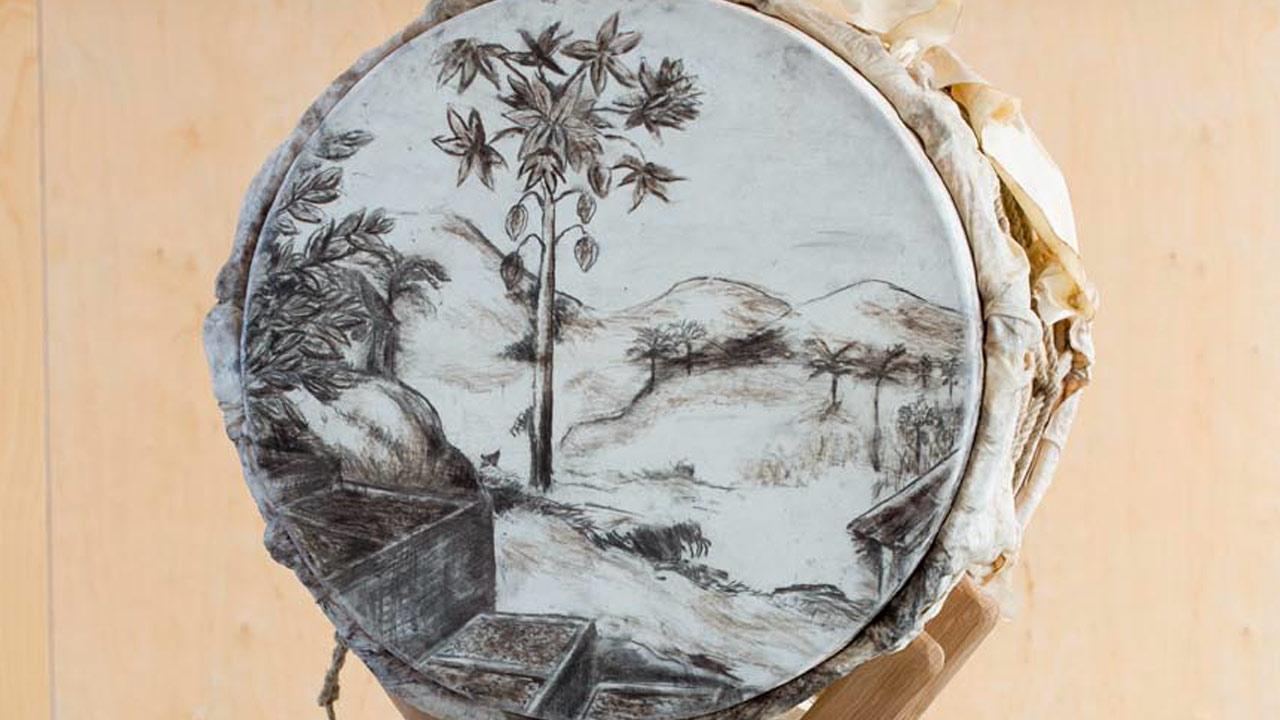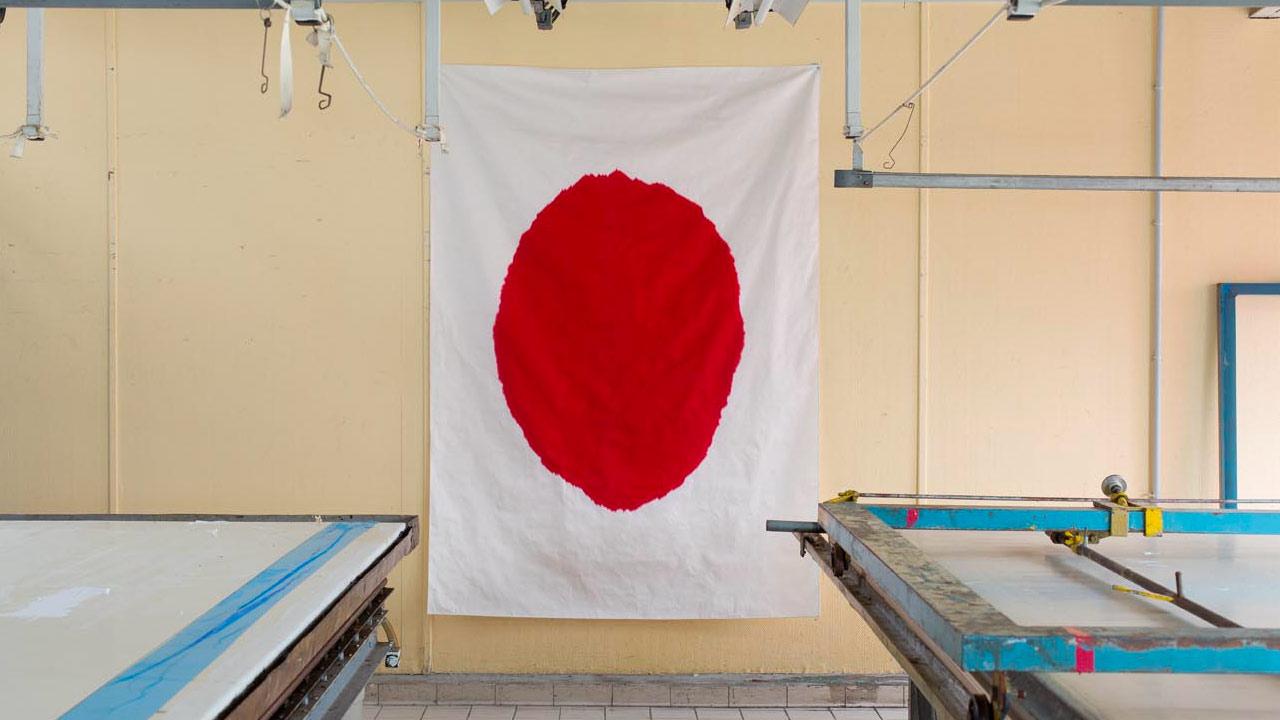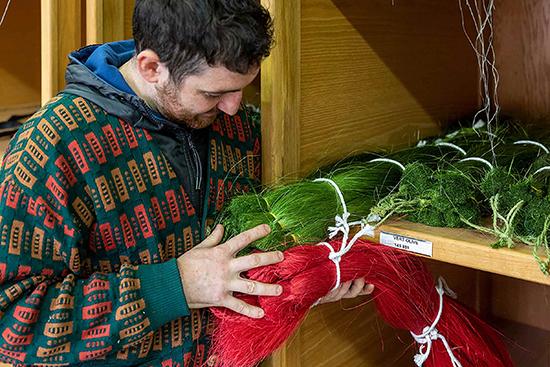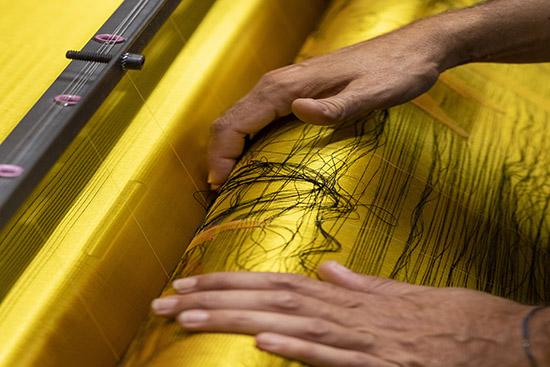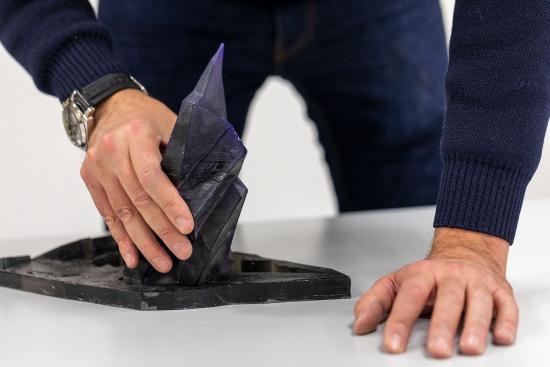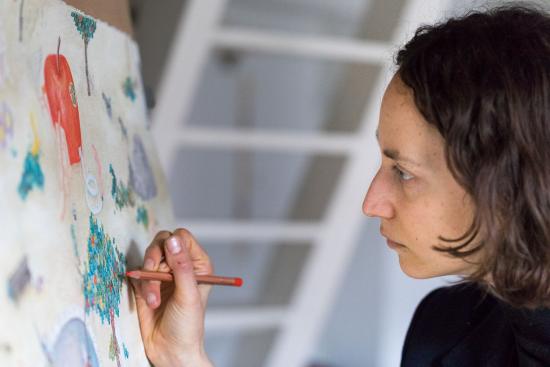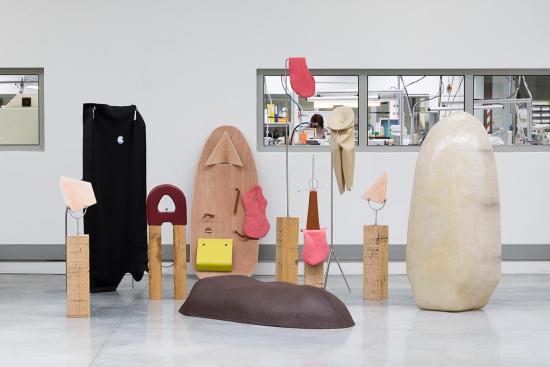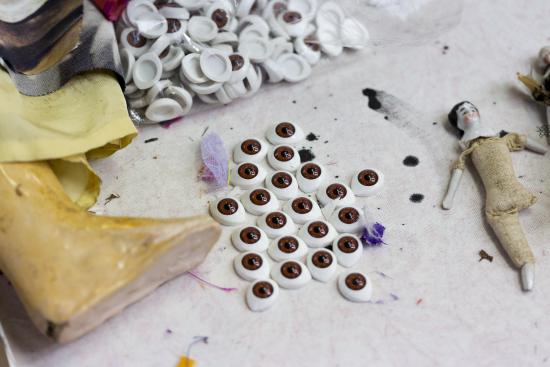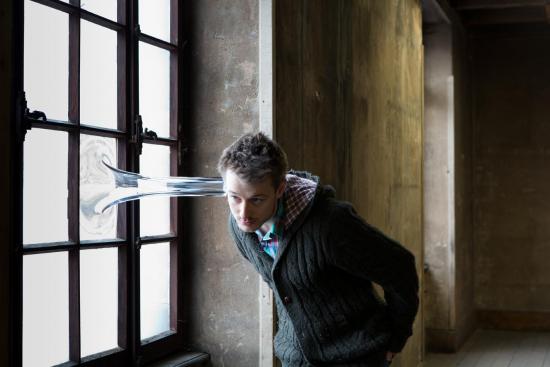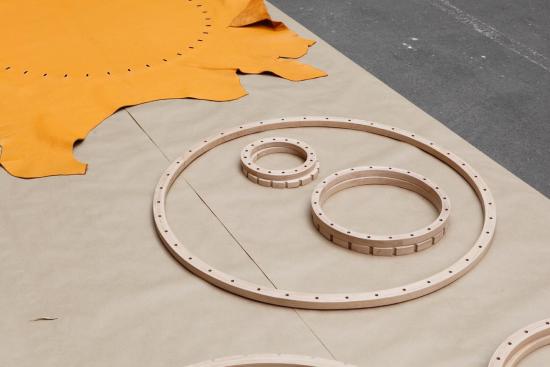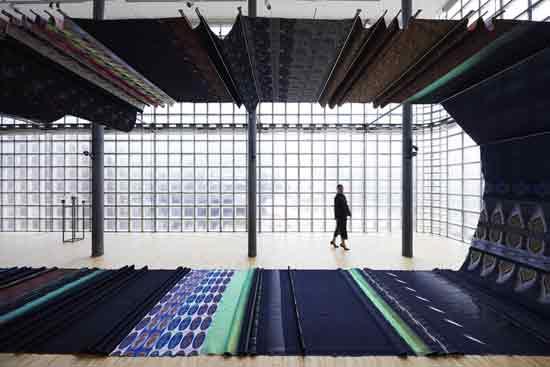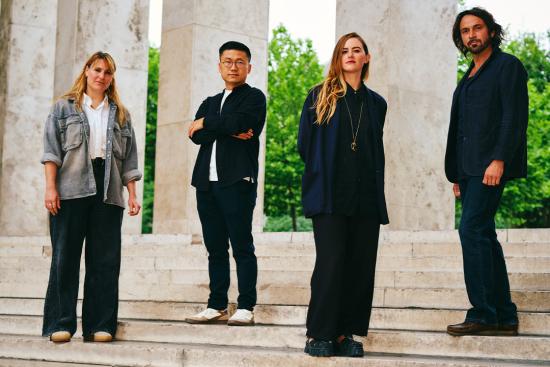2013 saw the first four-year cycle of the Artists’ Residencies programme, which was founded in 2010, draw to a close. The mentors for this cycle were seasoned artists with whom the Foundation has enjoyed an active, long-term collaboration: Susanna Fritscher, Richard Deacon, Giuseppe Penone and Emmanuel Saulnier.
Over the course of her residency at Holding Textile Hermès in the Lyon area, Gabriele Chiari (b. 1978, Austria) transposed her pictorial work to a new material, silk. Accompanied by the workshop’s craftspeople and by her mentor, Susanna Fritscher, the artist chose to explore a particularly rare technique: warp printing on duchess satin. This technique involves printing – or, in this case, painting – a design onto fabric, which is then unwoven and rewoven once more. The artist continued her usual approach to creation for the work’s initial steps: she poured paint onto a large, blank support – here silk rather than paper – and allowed the colourful substance to find its own form. The final work, following the reweaving step, is disorienting, its dark-red form apparently random yet integrated into the very structure of the fabric.
At the Maroquinerie Nontronnaise, in Dordogne, Marcos Avila Forero (Colombia, 1983) developed a project around the art of palenque communities. Formed by escaped slaves in rebel territories throughout Latin America, these communities survive today, and perpetuate and celebrate their history through their drums. Under the mentorship of Giuseppe Penone, Avila Forero asked the workshop’s craftspeople to redeploy their skills to construct a set of drums using parchment leather. He then inscribed the stories of the palenqueros upon the leather itself, before the drums were played by African musicians, thus closing a “circle” of population displacement and cultural intersection.
During her residency at the Cristallerie Saint-Louis in Moselle, Marie-Anne Franqueville (b. 1980, France) imagined a work that brought together a number of the site’s workshops. Mentored by Richard Deacon, Franqueville drew inspiration from a 1971 crystal service (Diane) to imagine a “killer table setting”. Each of the delicate pieces of crystalware in her work represents part of a weaponised female body: the central piece consists of a headpiece pierced by barbs and covered in a web of red filaments, while glasses with sharpened edged are placed upon two saucers, forming breasts with pointed nipples that enclose a dose of arsenic. The installation is thus at once venomous and fragile, disturbing and fascinating.
At the bespoke boot workshop of John Lobb, in Paris, Anne-Charlotte Yver (b. 1987, France) explored new territories by studying leather, under the mentorship of Emmanuel Saulnier. Intrigued by the process of transformation that leather entails, from animal to hide, Yver placed this duality at the heart of her work. In Living Dead Factory leather is subjected to a series of ordeals: fixed to the wall, stretched to an extreme point of tension by metallic bars, or suspended from a hook and supporting abstract structures in concrete. The components of her work are animated by a series of tensions between materials (leather, rubber, steel, concrete) and sensations (flexibility, weightiness, constraint, balance).
